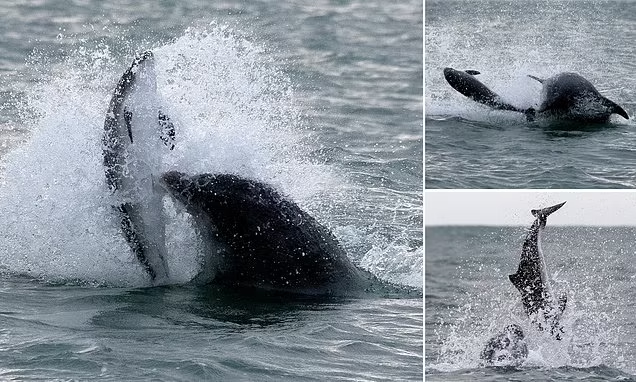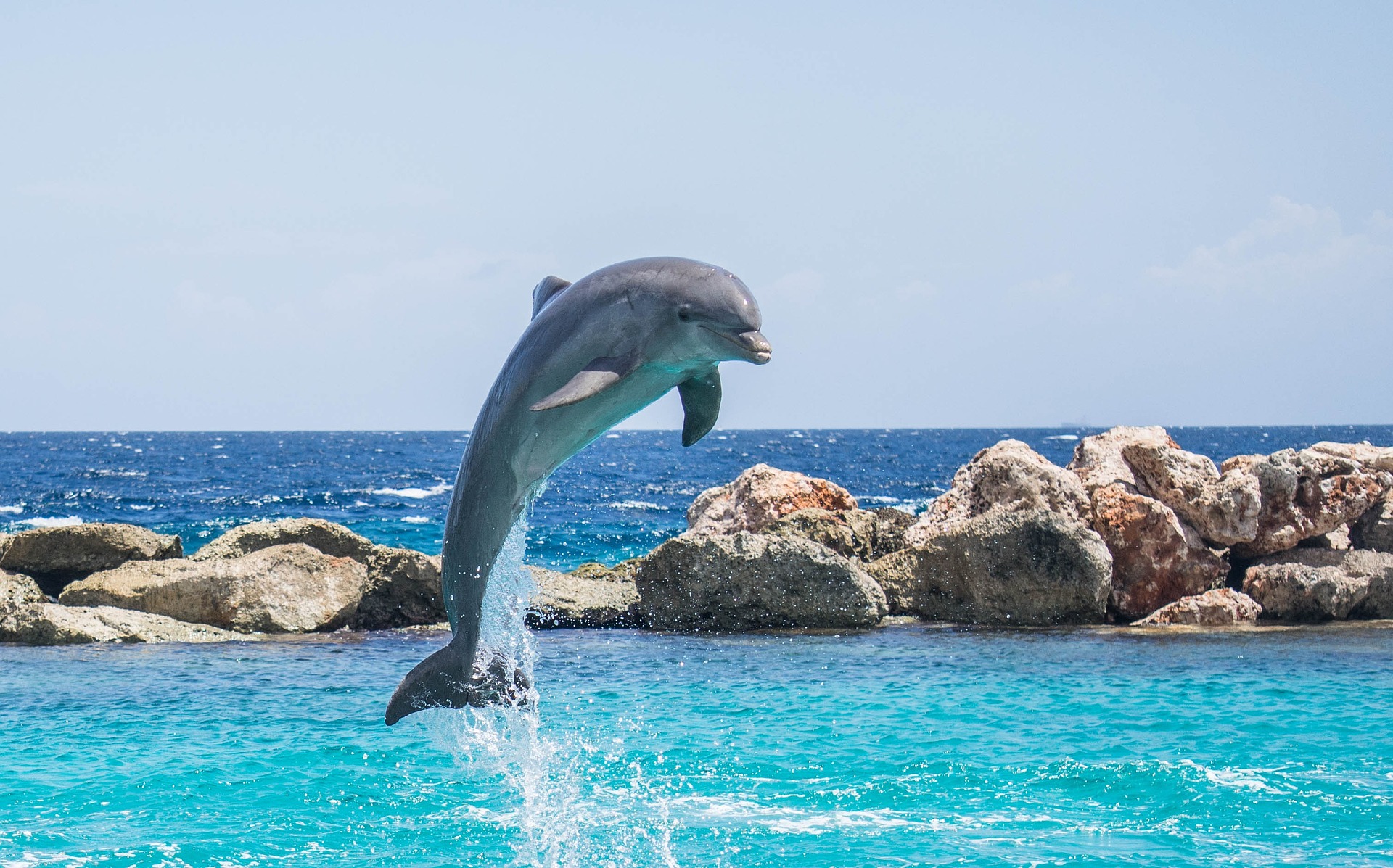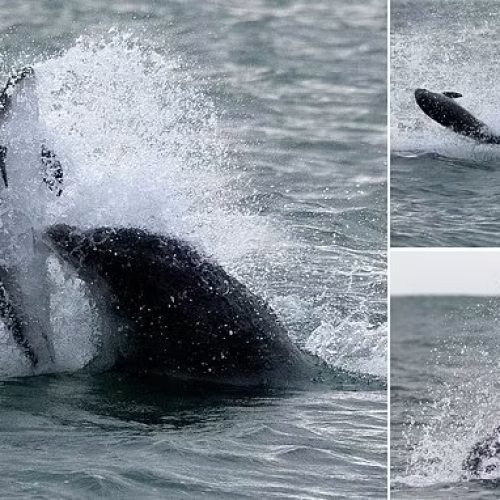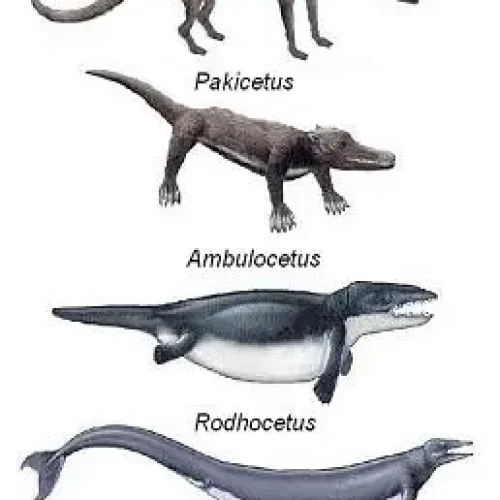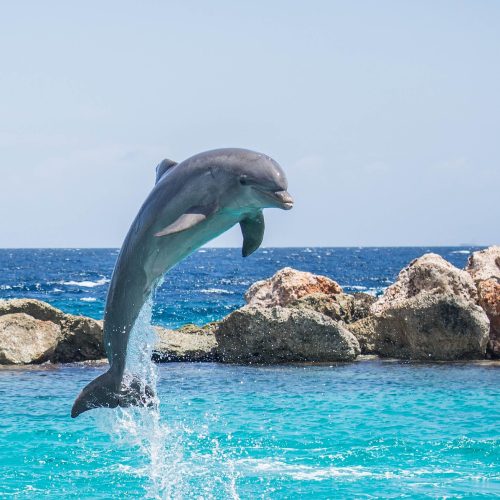Have you ever wondered why dolphins have fascinated mankind for thousands of years? From ancient art to modern pop culture, this spectacular marine mammal is a timeless symbol of intelligence, joy and freedom.
But what exactly does the dolphin represent in the collective imagination, and why does it resonate so strongly with us? Let’s dive together into the rich symbolism of the dolphin.
In this article
THE DOLPHIN: A SYMBOL OF HARMONY, INTELLIGENCE AND FREEDOM
Across time and cultures, the dolphin has held a revered and symbolic status, captivating the human imagination with its grace, intelligence and mysterious allure. In many traditions, this sleek marine mammal represents harmony, wisdom, protection and spiritual guidance.
In Ancient Greece, dolphins were seen as sacred animals, closely linked to Poseidon, god of the sea. Greeks viewed them as protectors of sailors, with the power to safeguard ships and guide them to safety. Coins and frescoes from this era frequently featured dolphin imagery.
Other Mediterranean cultures, such as the Minoans and Etruscans, also assigned dolphins an exalted status. Minoan palaces and pottery were decorated with dolphin motifs, while the Etruscans believed dolphins carried the souls of the deceased to the afterlife.
Many mythological traditions cast dolphins as intermediaries between the human and divine realms. In some tales, they serve as mounts for deities and nymphs. Stories also tell of dolphins rescuing shipwrecked sailors or fallen deities, such as in the Greek myth of Arion, a poet saved from drowning by a music-loving dolphin.
YOU MAY ALSO LIKE – How intelligent are dolphins?
Indigenous Australian lore tells of dolphins helping to create the world and guiding the spirits of the dead. In Maori tradition, dolphins were said to protect and transport brave warriors.
Dolphin imagery remains immensely popular in contemporary art, jewelry, tattoos and popular culture. For many, it represents freedom, joy and the untamed beauty of the natural world.
Dolphins’ powerful positive associations also make them popular symbols in New Age spirituality and wellness circles.
Conservation movements frequently rally around the dolphin as an emblem of fragile marine ecosystems in need of protection. Dolphin-inspired logos, for example, are common among environmental advocacy groups.
YOU MAY ALSO LIKE – Intelligence, talent and charisma: here are the 5 most famous dolphins in the animal world
DOLPHINS AS EMBLEMS OF WISDOM, PLAYFULNESS AND SOCIAL CONNECTION
Beyond their role in myth and art, real-life dolphins are remarkable creatures whose traits and behaviors have also fueled their rich symbolic heritage. Their intelligence, exuberance and social nature resonate with core human values and aspirations.
Science has revealed dolphins to be among the most intelligent animals on Earth. They demonstrate self-awareness, problem-solving skills, and the ability to learn complex behaviors.
Dolphins’ intricate communication, including signature whistles that function like names, underscores their cognitive sophistication.
For many, this intelligence makes dolphins aspirational symbols of wisdom and enlightenment. Their large brains and apparent emotional depth suggest a profound inner life that humans can admire and seek to emulate.
Dolphins are also emblems of joy and vivacity.
Their playful antics – leaping, surfing, and riding bow waves – seem to express a sheer delight in existence. In captivity and in the wild, they engage in play behaviors like passing seaweed back and forth or creating and playing with bubble rings.
This exuberance is both fascinating and endearing to humans. Dolphins remind us of the happiness that can be found in simply being alive and in tune with one’s environment. They invite us to embrace our own playful instincts.
Lastly, dolphins are potent symbols of social connection. Most dolphins live in tight-knit pods characterized by cooperation, communication and lifelong bonds between individuals. Mothers show intensive parental care, and some dolphins will support sick or injured pod mates.
For humans in an often fragmented and isolating world, dolphins represent the values of loyalty, empathy and community. They evoke our own longing for profound emotional bonds and harmonious social structures.
YOU MAY ALSO LIKE – Why is swimming with dolphins a unique, transformative experience?
THE DOLPHIN SPIRIT ANIMAL: MEANING AND INTERPRETATIONS
Those who feel a strong connection to the dolphin spirit animal are often highly intuitive, empathetic, and in tune with their emotions. Invoking the dolphin spirit can help to enhance these qualities, promoting greater self-awareness, compassion, and the ability to navigate life’s challenges with grace.
Meditation and visualization practices involving dolphins can be particularly powerful. Imagining oneself swimming alongside a pod of dolphins, for example, can evoke feelings of joy, freedom, and connection to a greater whole.
The dolphin spirit is also associated with emotional healing and the release of negative patterns. Dolphins are known for their gentle, nurturing nature and their ability to support their fellow pod members through times of stress or injury.
Similarly, those who work with dolphin energy may find themselves better able to process and release emotional traumas, both their own and those of others.
The dolphin spirit encourages us to prioritize self-care, to seek out supportive communities, and to extend compassion to all beings.
The dolphin moves through the water with incredible ease and fluidity, adapting effortlessly to the currents and rhythms of the ocean. This is a powerful metaphor for navigating the often tumultuous waters of human emotion and experience.
When we embrace the dolphin’s qualities of gentleness and fluidity, we learn to flow with life’s challenges rather than resisting them. We find the grace to move through difficult situations without losing our center or our sense of joy and playfulness.
DOLPHINS IN ART, LITERATURE AND POPULAR CULTURE
The dolphin’s enduring symbolic power is evident in its frequent appearances in art, literature, and popular culture across the globe and throughout history.
From ancient Minoan frescoes to contemporary sculptures, dolphins have long been a favorite subject for artists. The sinuous curves and dynamic motion of dolphins lend themselves beautifully to artistic representation.
Notable examples include the stunning Minoan “Dolphin Fresco” from Knossos Palace, dating back to around 1500 BCE, and the sleek, stylized dolphin sculptures of contemporary artists like Robert Wyland and John Searles.
Dolphins also frequently appear as charismatic, intelligent characters in literature and film. In many children’s stories, such as “The Music of Dolphins” by Karen Hesse, dolphins serve as wise, friendly guides for the young protagonists.
In popular films like “Flipper” and “The Cove,” dolphins are portrayed as clever, emotionally complex creatures capable of forming deep bonds with humans. These narratives often also raise awareness about the threats dolphins face and the importance of conservation.
The sleek, stylized silhouette of the dolphin is instantly recognizable and widely used in design and fashion. Dolphin logos and graphics appear on everything from sports team jerseys to beach towels and jewelry.
In fashion, dolphin motifs often evoke a sense of playful, aquatic chic. Dolphin-themed prints, embroideries, and accessories are perennially popular, especially in resort wear and children’s clothing.
THE CONSERVATION IMPERATIVE: PROTECTING DOLPHINS’ SYMBOLIC POWER
As potent as the dolphin’s symbolic resonance is, it is critical to remember that real dolphins face significant threats and that their conservation is vital.
Many dolphin species are endangered or threatened due to human activities. Some of the biggest threats include:
– Entanglement in fishing gear
– Pollution and chemical contamination
– Habitat loss due to coastal development
– Underwater noise pollution from shipping and sonar
In some parts of the world, dolphins are also still hunted directly for their meat or captured for use in marine parks and aquariums.
Given their intelligence, emotional resonance, and the threats they face, dolphins have become powerful symbols of the urgent need for marine conservation and environmental stewardship.
Many environmental organizations use dolphin imagery in their logos and campaigns to evoke an emotional connection to ocean life and to rally support for conservation measures.
The widespread love for dolphins makes them highly effective ambassadors for the wider cause of protecting marine ecosystems.
There are many ways individuals can support dolphin conservation, from making dolphin-friendly consumer choices (such as choosing sustainably caught seafood) to supporting organizations that work to protect dolphins and their habitats.
Raising awareness about the threats dolphins face and the importance of their conservation is also crucial. By sharing our fascination with and love for these extraordinary creatures, we can inspire others to become advocates for their protection.
In honoring the dolphin as a symbol of joy, wisdom, and connection, we must also commit to ensuring that these magnificent animals continue to swim free and thrive in the world’s oceans. Only then can their powerful symbolic presence continue to resonate and inspire for generations to come.

